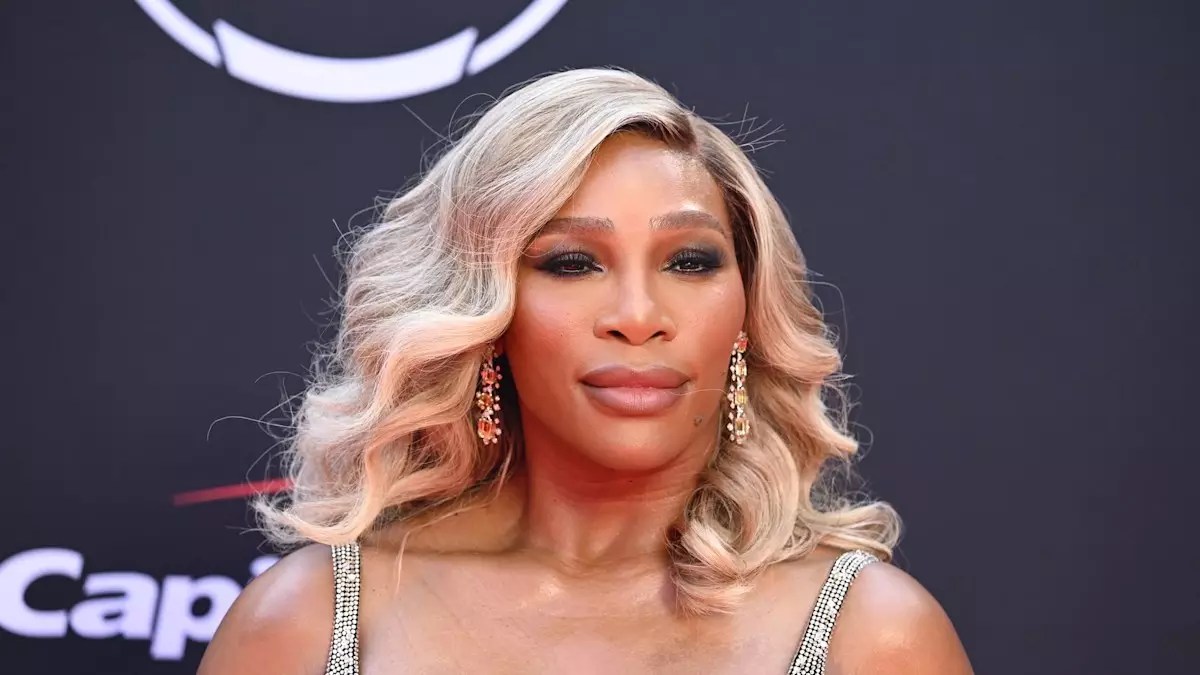Serena Williams has dominated the tennis world for decades, and with her unyielding tenacity and spirit, she’s made the transition from sports icon to cultural phenomenon seamless. While her historic wins on the court may seem like her ultimate legacy, her unexpected performance at the Super Bowl Halftime Show brought a new twist to her career narrative. Her brief but electrifying appearance during Kendrick Lamar’s performance encapsulated a blend of nostalgia and cultural significance, showcasing Serena’s multifaceted talent far beyond her athletic prowess.
The moment was reminiscent of a time when she had stirred discussions following her gold medal win at the 2012 Olympics—a time when her performance of the crip walk earned both accolades and backlash. This dance, which has deep roots in her hometown of Compton, serves as a symbol of cultural identity and resilience. By integrating this dance into one of the most-watched performances on the planet, Williams not only reclaimed her past but also transformed it into a powerful statement of empowerment and pride.
As Williams prepared for the Halftime Show, her fans were treated to an exclusive behind-the-scenes glimpse via her Instagram. The videos captured her transformation as she got glammed up in a striking blue and white outfit, showcasing her evolution not just as an athlete but as a performer. It was clear that this was more than a mere cameo; it was Serena’s way of linking her athletic legacy with her cultural roots.
In her own words, Williams revealed the eagerness she felt upon being approached by Kendrick and his team. She expressed disbelief at the offer to perform at the Super Bowl, a stage that celebrates not only sports but music and culture. Her excitement is palpable as she connected the dots between her iconic Olympic dance and this monumental opportunity, indicating a sense of destiny. “I knew my winning dance at the Olympics would pay off one day. End of story,” she asserted, highlighting her understanding of how legacy is often crafted over time.
The crip walk, a dance born in Compton, is more than just a set of moves; it embodies the essence of the community and the narrative of those who live within it. When Serena performed this dance, she invoked history, and with it, the complexities of cultural identity. Her earlier experience of receiving backlash for the same dance highlighted the nuanced challenges individuals face when embodying their heritage in the public eye.
In a culture where expressions of identity can be misconstrued, it was refreshing to see Williams embrace her roots confidently. Following her performance, she provided a lighthearted contrast by comparing her Super Bowl antics to the more buttoned-up environment of Wimbledon, emphasizing how different spaces require different expressions of oneself. Through humor and authenticity, she demonstrated how reclaiming one’s identity can evolve alongside personal achievements.
The significance of Williams’ appearance was further amplified by her personal connections to the hip-hop community, notably her past relationship with Drake. The ongoing feud between Kendrick Lamar and Drake seeped into the narrative of her performance, adding layers of intrigue and significance. Not only was she reclaiming her dance and showcasing her talent, but she was also navigating the complex web of relationships and rivalries within the music industry.
Serena’s husband, Alexis Ohanian, voiced his pride on social media, emphasizing the profound impact she has on many. His comments reflect the broader conversation about representation and influence in the arts and athletics, reinforcing the ideologies of empowerment and cultural ownership that emerged from the halftime performance.
Serena Williams’ appearance at the Super Bowl Halftime Show was far more than a fleeting moment on stage; it was an intersection of culture, identity, and legacy. It symbolized not just how her creative expression resonates with her journey as an athlete but also her ability to shift the narrative and redefine boundaries. As she danced and celebrated her history, Serena reminded us all that our past and present can collide beautifully, creating a legacy that inspires both in and outside the arena.
In essence, the performance encapsulated a glimmer of her journey—a testament to resilience, empowerment, and the beautiful dance of life that continues with every step she takes.


Leave a Reply